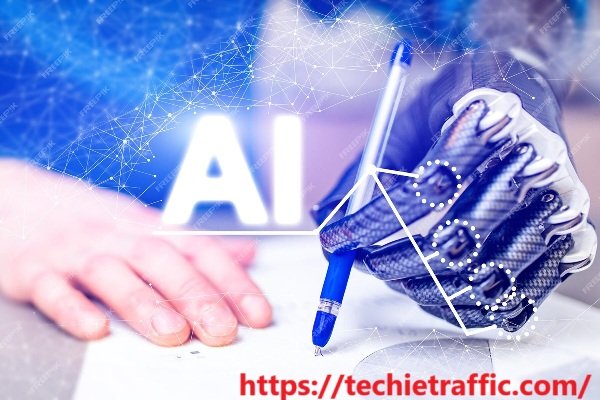Introduction
In the fast-paced world of artificial intelligence, innovation is key to staying ahead. One of the most exciting players on the AI stage today is Krea AI, a cutting-edge platform that has gained significant attention for its ability to transform industries with powerful AI and machine learning solutions. Whether you’re a business owner, tech enthusiast, or just someone curious about the future of artificial intelligence, Krea offers a glimpse into the possibilities of tomorrow’s technology.
In this article, we will delve deep into what Krea is, how it works, the benefits it offers, and how it’s changing the way businesses and industries operate. We will also explore real-world applications, its key features, and the impact of AI in sectors ranging from healthcare to finance.
So, sit tight and get ready for a comprehensive look at Krea AI.
1. What is Krea AI?
Krea AI is a comprehensive artificial intelligence platform that focuses on providing businesses with advanced AI tools, solutions, and frameworks. Built on cutting-edge machine learning algorithms and models, Krea offers scalable, efficient, and easy-to-integrate AI systems for various industries. From predictive analytics to natural language processing (NLP), Krea covers a wide range of functionalities, making it a versatile tool for modern businesses.
Key Features:
- Advanced Machine Learning Models: Krea offers highly optimized and effective ML models that can handle big data and provide meaningful insights.
- Scalability: Whether you’re a startup or an established enterprise, Krea scalable solutions ensure that businesses can grow without worrying about outgrowing their AI tools.
- Automation: Automation is at the core of Krea, enabling businesses to streamline operations and reduce human error.
2. How Krea AI Works
Krea AI is designed with simplicity and flexibility in mind. It integrates seamlessly with existing business systems and offers an intuitive interface for users. The platform leverages deep learning, neural networks, and advanced analytics to provide insights that can drive decision-making.
Krea AI works by:
- Data Collection and Preprocessing: Gathering large amounts of structured and unstructured data from different sources.
- Model Training: Using machine learning algorithms to train models based on this data.
- Prediction and Analysis: Once trained, these models predict outcomes and analyze data in real time, providing actionable insights.
3. Key Features of Krea AI
| Feature | Description |
|---|---|
| Predictive Analytics | Forecasts future trends based on historical data. |
| Natural Language Processing (NLP) | Enables machines to understand and process human language. |
| Computer Vision | Helps AI systems interpret and understand visual information. |
| Chatbots & Virtual Assistants | Automates customer interactions using conversational AI. |
| Data Automation | Streamlines data-related processes through intelligent automation. |
These features enable businesses to utilize Krea capabilities across multiple use cases, improving overall productivity.
4. Applications of Krea AI in Different Industries

Healthcare
In healthcare, Krea is helping doctors and medical professionals make data-driven decisions by analyzing patient data, diagnosing illnesses, and predicting future health trends. Its predictive capabilities allow healthcare providers to offer personalized treatment plans, improving patient outcomes.
Example Applications:
- Disease detection
- Medical imaging analysis
- Predictive health models
Finance
In the financial sector, Krea is used to detect fraudulent transactions, analyze market trends, and create risk assessment models. The platform’s machine learning capabilities help in portfolio management and algorithmic trading.
Example Applications:
- Fraud detection
- Algorithmic trading
- Risk management
Retail
Krea AI is enhancing customer experiences in retail by analyzing consumer behavior, automating inventory management, and offering personalized recommendations. By using AI-driven insights, retailers can create targeted marketing strategies and improve sales.
Example Applications:
- Personalized recommendations
- Dynamic pricing
- Inventory management
Manufacturing
In manufacturing, Krea improves production efficiency by predicting equipment failures, optimizing supply chains, and automating quality control processes.
Example Applications:
- Predictive maintenance
- Supply chain optimization
- Quality control automation
Customer Service
Krea chatbot capabilities have revolutionized customer service by providing 24/7 support, answering customer inquiries, and resolving issues efficiently.
Example Applications:
- Automated customer support
- Complaint resolution
- Personalized customer interaction
5. Benefits of Krea AI
Krea AI offers numerous benefits, including:
- Enhanced Efficiency: By automating tasks and optimizing workflows, businesses can operate more efficiently.
- Improved Decision-Making: Real-time insights and predictions help businesses make better, data-driven decisions.
- Cost Savings: Automation and predictive capabilities reduce operational costs in the long run.
- Scalability: Krea flexibility allows businesses to scale operations without worrying about technology constraints.
6. Challenges and Limitations

While Krea provides remarkable benefits, there are certain challenges and limitations:
- Data Dependency: For Krea to deliver accurate results, it requires high-quality and clean data.
- Cost: While Krea offers significant value, the initial cost of implementation can be high for smaller businesses.
- Complexity: Businesses might find the AI models complex to integrate without a skilled technical team.
7. Krea AI vs. Other AI Platforms
When comparing Krea with other AI platforms like IBM Watson, Google AI, and Microsoft Azure, several unique features stand out:
- Customization: Krea offers more tailored solutions for niche industries.
- Ease of Integration: Its user-friendly interface makes it easier to integrate with existing systems compared to other AI platforms.
- Affordability: Compared to some enterprise-level solutions, Krea offers competitive pricing.
8. Future of Krea AI
Looking forward, Krea is poised to expand its capabilities, integrating more advanced technologies like Quantum Computing and Edge AI. The future of AI lies in making systems smarter, faster, and more autonomous, and Krea is right on the edge of these innovations. It is expected to play a key role in the development of AI ethics, data security, and regulatory frameworks.
9. Conclusion
Krea AI is shaping the future of artificial intelligence, offering businesses an innovative, scalable, and cost-effective platform to harness the power of AI. With applications across industries like healthcare, finance, retail, and customer service, Krea is transforming the way companies operate and make decisions.
As technology continues to evolve, platforms like Krea will become increasingly integral in helping businesses unlock new opportunities, drive growth, and improve efficiency. If you’re considering integrating AI into your business processes, Krea offers an excellent starting point.
Read More: Remaker AI: The Revolutionary Tool for AI-Powered Content Creation and Design


